NFTs
The Artnet NFT 30 Report: Meet the Artists, Innovators, and Collectors Who Built Our New Crypto-Art Era (Part Two)
Discover the people who have created the new NFT paradigm brick by digital brick in part two of our three-part report.
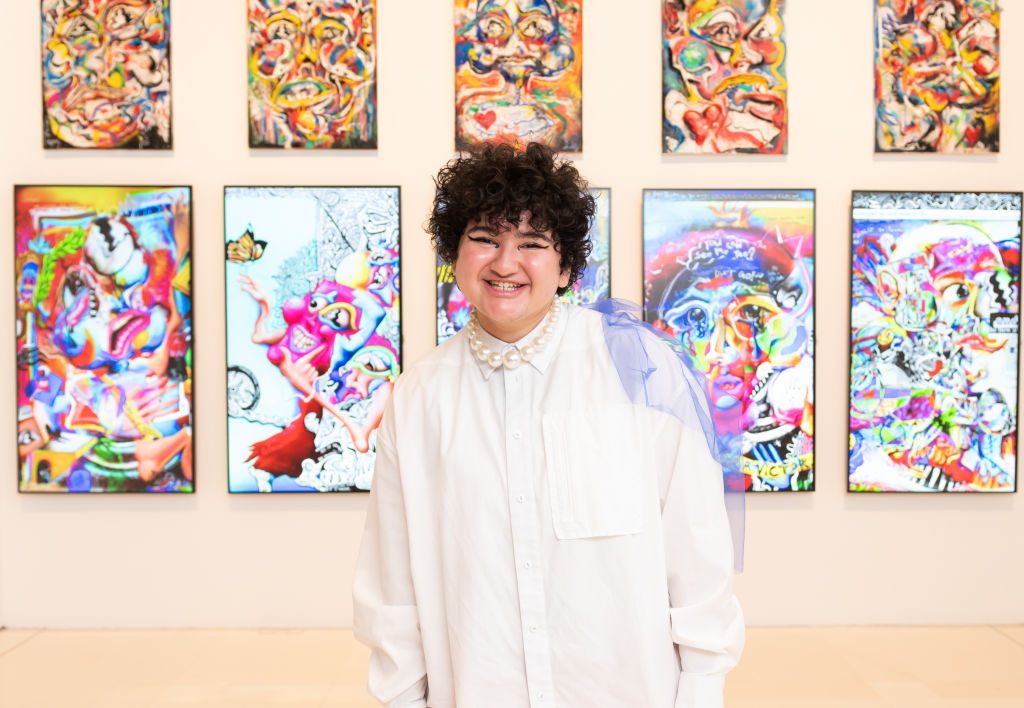
Discover the people who have created the new NFT paradigm brick by digital brick in part two of our three-part report.

Artnet NFT

Who are the figures powering today’s NFT boom? The Artnet NFT 30, sponsored by the APENFT Foundation, offers an introduction to key players.

Photo: Courtesy of Dmitri Cherniak.
An early entrant to crypto in 2014, when he began using Coinbase’s tipping function to fund journalists he admired, the Canadian-born, New York-based digital artist and coder Dmitri Cherniak has been probing the implications of blockchain-based generative art for years—but it was only earlier this year that his fascinating approach to art-making caught fire. That’s because it was this January when he brought his thoroughly worked-out algorithmic approach (based on p5.js script) to the plug-and-play Art Blocks minting platform and dropped Ringers, a series of 1,000 unique works that has enraptured NFT collectors and the art world alike.
As with so much of the best modern art—like Mondrian, to whom Cherniak is frequently compared—Ringers is built out of deceptively simple components, with each work consisting of an algorithmically generated number of “pegs” strung together by “strings” according to a variety of layouts, sizes, and color palettes. The results look like something that wouldn’t be out of place hanging on a wall in MoMA’s permanent collection, only invested with the unpredictable flukes and rarities that make generative art so addictively collectible.
In October, the collector @AkiraReloaded sold Ringer #109, a minimal yet dazzling composition of red, black, yellow, and white concentric circles, for 2,100 ETH ($6.9 million at the time)—making it the most expensive Art Blocks NFT sold to date.
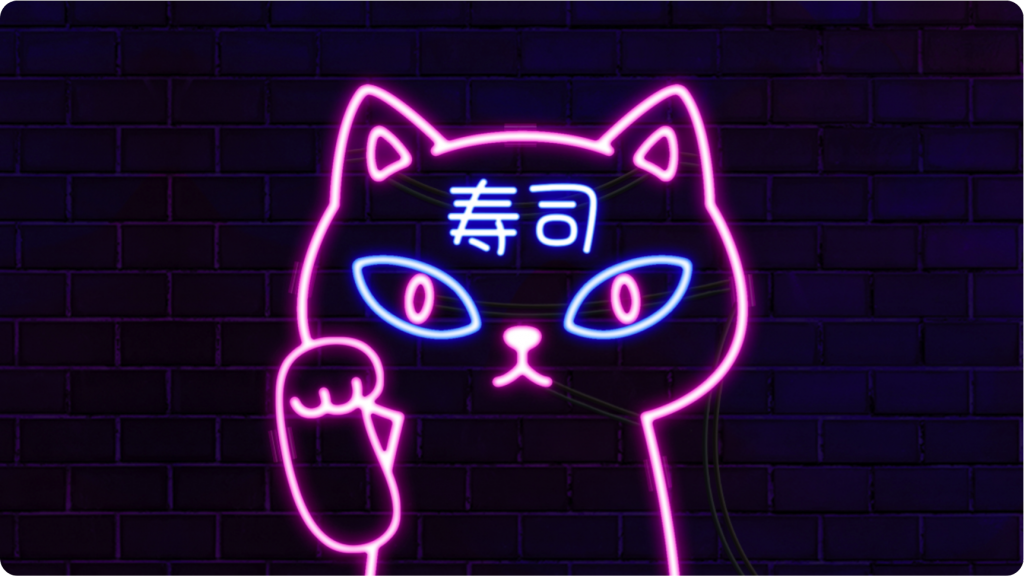
Photo: Courtesy of Vincent Van Dough, avatar by @0xlacroix.
Let no one say the NFT community does not appreciate a good art pun. Vincent Van Dough is the hilarious handle of the anonymous collector behind an equally entertaining Twitter feed, but don’t be fooled by the humor—this is one of the more formidable forces in the NFT market today. Coming from a background in the blockchain industry, Vincent Van Dough is conspicuous for their outsized spending habits, having unloaded over 8,600 ETH (worth $36 million today) on NFTs so far. A particular area of interest is AI and generative art, with Vincent Van Dough buying Art Blocks NFTs in-depth—including dropping 20 ETH on a single coveted project, their most expensive purchase to date.
Nowadays, the collector is ramping up even further in ambition. Joining forces with Three Arrows Capital—fellow high-rollers in the NFT realm—Vincent recently launched an NFT fund called Starry Night Capital (get it?) that aims to raise $100 million and open a brick-and-mortar gallery next year.

Photo: Courtesy of Claire Silver.
As is the case with many of those deeply engaged in Internet culture, the origins of Claire Silver’s story trace back to 4chan, the infamous anonymous online forum where anything goes. It was during a 2017 conversation on the platform that the mysterious collector Mr. 703 first introduced her to NFTs and offered a bold prediction: that despite the digital medium’s then-irrelevance, NFTs would eventually end up in MoMA. Then, as a mode of encouragement, Mr. 703—who had scooped up close to 800 NFTs in the early free phase, taking his name from the 703 he kept after giving the rest away—gifted Silver three Punks to get her started.
At the time, Silver was at the beginning of a new chapter. A significant illness had caused her to leave her former job and take up painting, and she had recently begun experimenting with collaborative AI art using GPT-3 (short for Generative Pre-Trained Transformer 3), a software model that neutrally absorbs media input before generating text in language that is deeply (and unsettlingly) human-like.
Today, Silver is regarded as a significant crypto artist. And while hardly anyone knows what Silver actually looks like in person, her admirers feel they know her through the autobiographical details she includes in her artworks—and, perhaps above all, they know her for her pink-haired Punk avatar, which is the subject of an ever-growing pool of fan art.
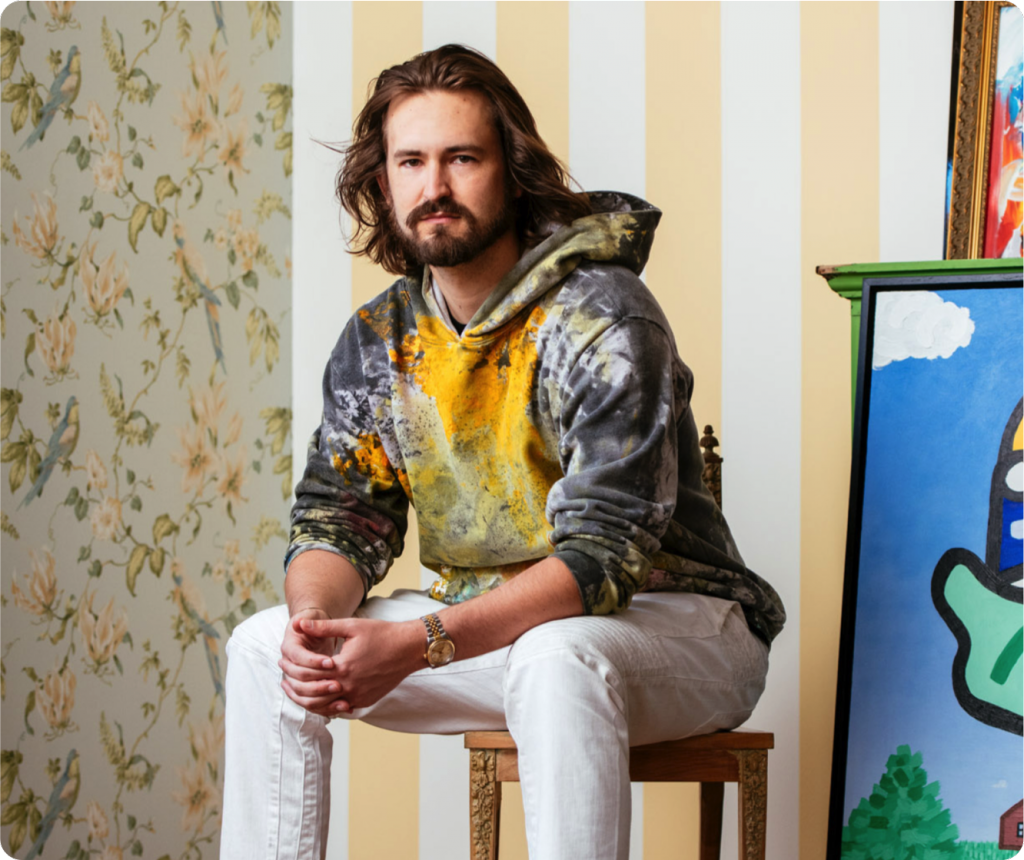
Photo: Courtesy of the Museum of Crypto Art.
After logging years as an investment banker and trader, Colborn Bell ditched the world of suits and fleece vests in April 2020 to co-found the virtual Museum of Crypto Art (M○C△) in partnership with the prominent Miami-based digital art collector Pablo Rodriguez-Fraile. After the two ended their business relationship earlier this year, Bell took full responsibility for stewarding and expanding the museum’s collection—a role that makes him one of the most influential figures putting a curatorial framework on the exploding crypto movement, albeit via “a multi-stakeholder decentralized platform of art curation and exhibition.”
So what is the Museum of Crypto Art? According to its mission statement, it is an institution that “challenges, creates conflict, provokes” by posing “two questions: ‘What is art?’ and ‘Who decides?’” Exclusively acquiring works made before December 2020, it holds some 200 pieces by 200 crypto artists in its permanent collection, including examples by Beeple, Kevin Abosch, Dmitri Cherniak, XCOPY, Skygolpe, robness, Hackatao, Obvious, and, of course, a CryptoPunk by Larva Labs—#6926 to be precise, a cigarette-smoking, eyepatched, hoodie-wearing Punk. (Bell’s own collection, incidentally, numbers some 2,000 NFTs, which he estimates he paid more than $400,000 to acquire.)
Today, the museum operates according to the M○C△ Manifesto, which hinges on the inevitability of technology-driven change and the need to cope with this ongoing shift if “the common truth” is to be “preserved.” Word has it that the museum may take its mission into the embodied world as well, with a physical space in the works.

Photo: Courtesy of Straybits.
Straybits is a mythic figure among the CryptoPunk OGs and an early adopter who is credited with laying the foundation for today’s liquid Punk market. A professional hacker by trade who acquired a fascination with smart contracts during the nascent stages of NFTs, he put half his savings into Ethereum and moved to Sri Lanka in 2017 to adopt the life of a digital nomad. Straybits then began snapping up the rarest of Punks one by one, including seven of the nine alien Punks in existence and eight of the 24 apes. In fact, most of the rare punks that have ever appeared on the market were once in his collection, including the famous “Covid Alien” #7523, which was sold at Sotheby’s this June for $11.8 million.
Straybits, however, never saw the point in one person hoarding these CryptoPunks—he wanted others to be able to enjoy them as well. In some cases, he spread the gospel through conversation, even discussing Punks and smart contracts with a (surprisingly tech-savvy) Dutch monk living in the mountains of Sri Lanka. He also unloaded many of his key holdings, and, in January 2018, he sold his last alien—CryptoPunk #7804—for 12 ETH (around $14,000 at the time).
But this is not the end of Straybits’s story. In 2021, as the Punk market exploded, he dug through an old, forgotten wallet and found #5577—the “Cowboy Ape.” Surely, the crypto spirits wanted to reward him for his generous stewardship of the rarest Punks.
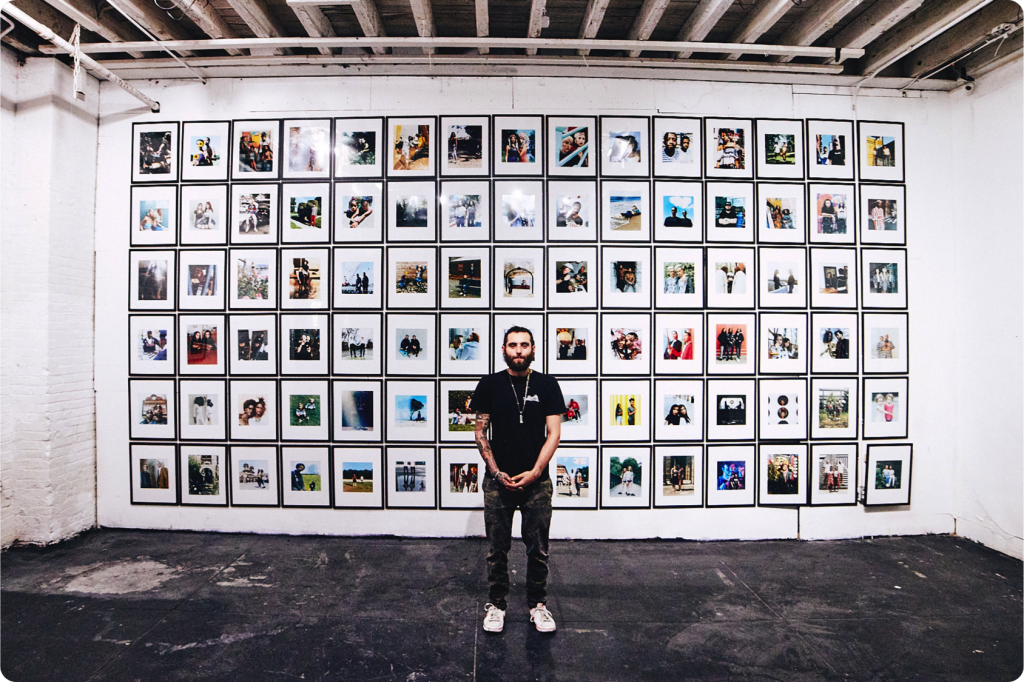
Photo: Courtesy of the artist, Justin Aversano
When the photographer Justin Aversano heard that a major NFT collector had spent six figures on a CryptoPunk, he archly offered to sell him physical prints from his own “Twin Flames” series—a suite of 100 gripping portraits of identical and fraternal twins—for a fraction of what the collector plunked down for “a JPEG.” The would-be buyer had a counterproposal: Why didn’t Aversano digitize the prints and mint them as NFTs instead? He did, and since then, he has perhaps become the most successful photographer to cross over from analogue to the NFT realm.
The transition comes with its rewards: Aversano has embedded smart contracts into his NFTs that enable him to earn royalties from the resale of his digital works when they go to auction—meaning that when Christie’s sold his Twin Flames #83 NFT (accompanied by a full physical suite of the “Twin Flames” series) for $1.1 million in October against a $150,000 high estimate, he got a cut of the proceeds.
A true convert to NFTs, Aversano (who today is affianced to Nicole Buffett, an NFT artist who happens to be Warren Buffett’s granddaughter) also arranged for CryptoPunks to be displayed on billboards all over Miami a few months ago—an initiative that he holds dear as the cofounder of Save Art Space, an organization supporting community art in public spaces.
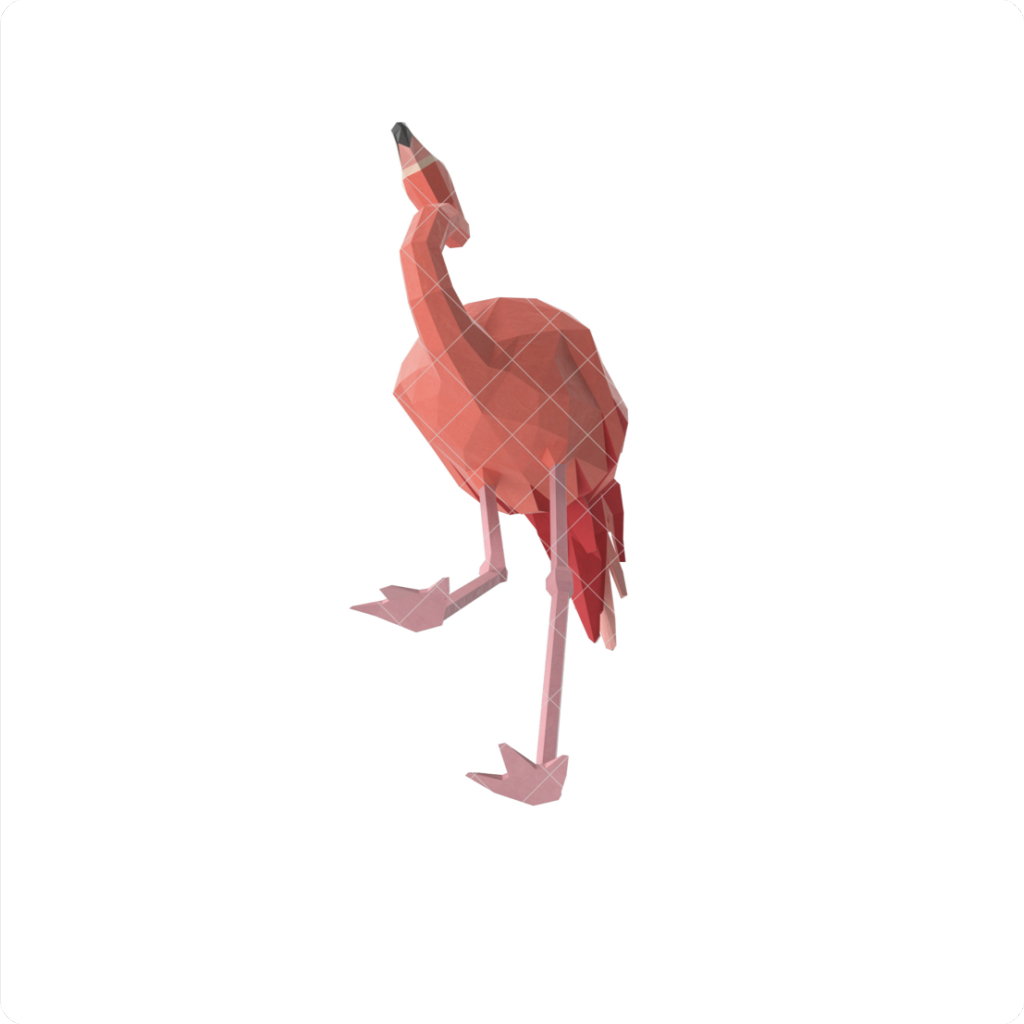
Photo: Courtesy of Flamingo DAO
Of all the DAOs (decentralized autonomous organizations, or collectives of NFT investors) mobilizing across the cryptosphere, few compare to Flamingo DAO, the granddaddy of all NFT-focused DAOs. Having emerged from an incubator in the LAO (limited-liability autonomous organization) community in October 2020 with a $25 million crypto war chest and a mission of acquiring important NFTs that it believes will stand the test of time, this heavyweight think tank boasts an advisory board stocked with several of the most high-profile thought leaders in the NFT space, including SuperRare cofounder and CEO John Crain, OpenSea cofounders Alex Atallah and Devin Finzer, and the artist and NFT inventor Kevin McCoy.
With such an all-star hive mind, Flamingo DAO—which was launched by a team including Priyanka Desai and Aaron Wright of OpenLaw, a company that “makes it easy to create legal agreements that work with Ethereum”—has made a play of going in early and long on such investment-grade NFTs as CryptoPunks (they own 215, including the smirking Punk #1), Chromie Squiggles (246), Meebits (286), Bored Ape Yacht Club (22), and works by Tom Sachs (16), along with other choice examples. Collecting in such depth has not only allowed the group to amass valuable holdings, it has also enabled it to shape the critical discourse in the process via its stamp of approval.
There’s a high bar for new NFTs to enter the collection, and for new members to enter the DAO as well. It’s only after a rigorous financial review—including verification of an applicant’s net worth; an affidavit from a licensed investment advisor, lawyer, or CPA; and detailed financial disclosures—that one is able to join, gaining 1 percent voting rights for every 60 ETH invested (up to 540 ETH, or 9 percent voting rights). Want to become a member? Too bad—it’s fully subscribed.
While the ultimate success of the group’s venture remains to be seen, it’s already bearing fruit in the near term: Flamingo DAO’s NFT collection is now reportedly worth more than a billion dollars, a staggering 40-fold appreciation to date.
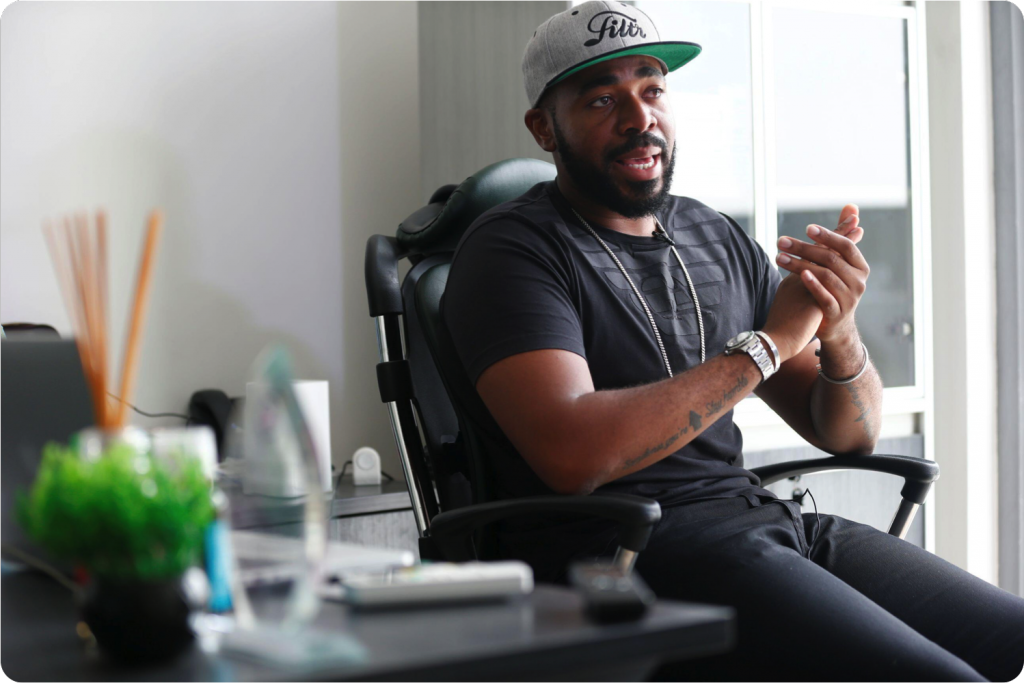
Photo: REUTERS/Alamy Stock Photo
For Michael Ugwu (aka Magic Mike, aka Iammm.eth), it had to start with someone. Since 2017, the Nigerian digital music executive has been one of the few truly significant NFT collectors based in Africa, amassing a collection of hundreds of pieces, including work by the most successful NFT artist yet to emerge in Africa, his countryman Osinachi, and a version of The Red Man, a piece by the 22-year-old Nigerian artist Anthony Azekwoh that went viral on Twitter, getting more than 228,000 likes.
As the founder and CEO of FreeME Digital, which calls itself “Nigeria’s foremost online digital music distribution network,” Ugwu doesn’t question the potential for technology to disrupt even the most entrenched traditional businesses. And while he’s collecting against the current—Nigeria has instituted a sweeping ban on crypto, shutting down bank accounts tied to the currency—he is clearly thinking about the long game.
Believing that the early NFT artists will be “historic,” he treats them as such, putting his collection on rotating view in a virtual museum he built on the metaverse platform OnCyber, displaying works by Fewocious, XCOPY, and Sarah Meyohas alongside Rare Pepes, Meebits, Bored Ape Yacht Club mutants, and, in pride of place, the mask-wearing CryptoPunk #6266.
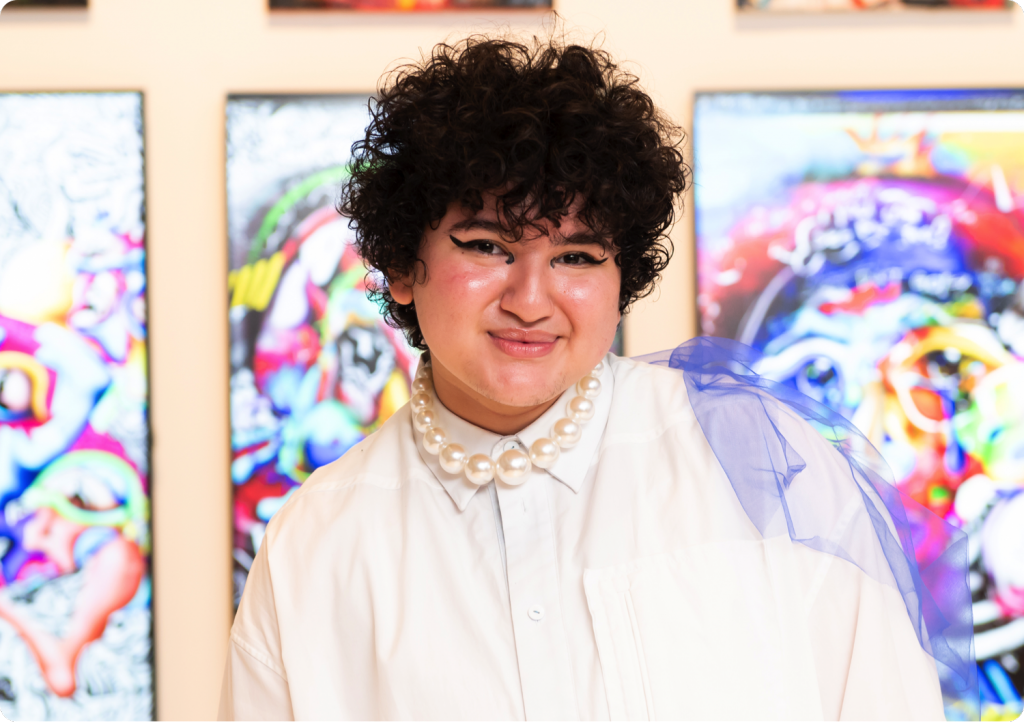
Photo: Noam Galai/Getty Images
One of the first responses that Victor Langlois, aka Fewocious, ever sparked when showing his digital art to the world was brutally negative: “Your art is so ugly and that’s why you can’t do it.” That he received this feedback from his own grandmother, who had taken him in after he ran away from an abusive home at age 12, made it all the more cutting.
Of course, that’s now ancient history. At the age of 18, the queer transgender artist— who has said he found in the crypto community the support he lacked from his family—is today breaking boundaries with his blazingly colorful, fiercely personal NFT work, which can command prices in the millions.
Unlike many top players in the NFT space, who painstakingly preserve their anonymity behind cyphers and screen names, Fewocious has placed his own biography in the center of his practice. Most famously, his 2021 work Hello, i’m Victor (FEWOCiOUS) and This Is My Life details his harrowing experience between the ages of 14 and 18, when he struggled to find himself (and his talent) under the gaze of his disapproving family. A combination of digital pieces and tangible paintings accompanied by a series of drawings, it sold for $2.2 million at Christie’s New York this June—making him the youngest artist to sell at the auction house, as well as the first to crash its site due to high demand.
In keeping with his hybrid approach to crypto art, Fewocious insisted on hand-delivering each element of the work to the winning bidders, with every item arriving in a custom suitcase, an act that paid homage to the method by which he formerly transferred his work, pre-fame, and symbolized the young art star’s active decision to unburden himself from the baggage of his past.
Now based in Seattle, Fewocious is busy building out his community in the physical realm by hosting painting parties and also in other digital arenas, collaborating on high-profile projects with digital fashion brand RTFKT Studios, as well as Odius, Parrot_ism, and Jonathan Wolfe.

Photo: Visual China Group/Getty Images
At the age of 26, the Chinese techno-entrepreneur Justin Sun was already seen as a prodigy, having developed a live-streaming app similar to Snapchat. But he became famous when Alibaba CEO Jack Ma hand-picked him to attend Hupan University, the elite business school he founded to groom the next generation of Chinese business visionaries, making Sun its first millennial graduate. It didn’t take him long to turn theory into practice: just two years later, Sun leapt into the center of the burgeoning crypto industry, founding the prominent blockchain platform TRON.
Now 31, Sun has since earned a reputation as someone who is constantly hungry for new opportunities, and willing to pay to access them. Last year, for instance, he spent $4.5 million to share a meal with revered financier Warren Buffett—at which point he took the opportunity to give him 1,930,830 TRON tokens. Lately, Sun has moved with overwhelming force into the NFT arena, first becoming known as a major player when he became the underbidder on the $69.3 million Beeple at Christie’s last March (he lost out on the prize due to a technical glitch). He has since gotten his Beeple—the NFT Ocean Front, which he bought for $6 million, plus five others—but has also expanded his scope to buying classical modern art at auction, paying $20 million for a Picasso Marie-Thérèse nude, $2 million for a Warhol self-portrait, and, most recently, a whopping $78 million for Giacometti’s Le Nez this November.
But don’t be fooled into thinking of him as a traditional collector. Sun’s new venture, APENFT Foundation (which, full disclosure, is the sponsor of this list but had no role in selecting the listees), has a mission to “democratize the art market by collecting culturally significant NFTs and sharing them with our community in the age of Metaverse,” according to Sydney Xiong, the director of the foundation. Eventually, Sun believes, “[50 percent] of the world’s top-notch artists and artworks will be recorded as NFTs in the following decade”—adding, “that’s where APENFT Foundation can come into play.”